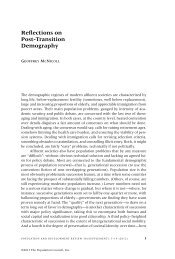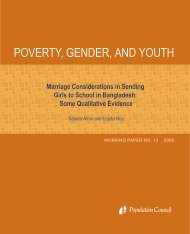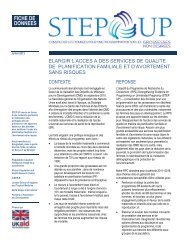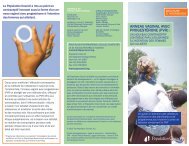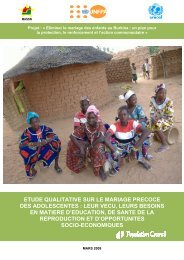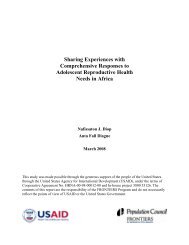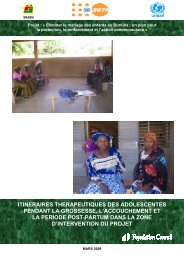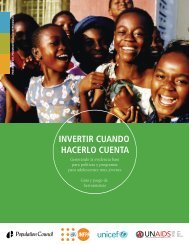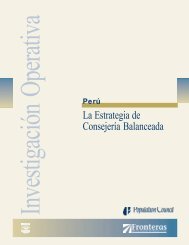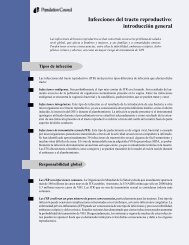Community Health Volunteer's Training Manual - Population Council
Community Health Volunteer's Training Manual - Population Council
Community Health Volunteer's Training Manual - Population Council
You also want an ePaper? Increase the reach of your titles
YUMPU automatically turns print PDFs into web optimized ePapers that Google loves.
Module 2 <strong>Community</strong> Mobilisation and Tools<br />
100<br />
Exercise 2.2.1: Group discussion<br />
Objective<br />
1. To discuss how to keep surveillance on<br />
key diseases<br />
Time: 20 minutes<br />
Questions<br />
1. What is disease surveillance?<br />
2. What common diseases occur in your<br />
community?<br />
3. Which of these needs to be reported<br />
immediately to the CHO?<br />
Instructions to the Facilitator<br />
1. Lead a brainstorming session<br />
on common diseases in the<br />
communities<br />
2. Encourage each participant to<br />
talk about his/her community<br />
3. Compare and see which<br />
ones are common to all<br />
communities.<br />
4. Discuss the need for constant<br />
surveillance.<br />
<strong>Community</strong> based surveillance is the process where community people and volunteers keep<br />
watch over what is going on in the community and its surroundings and report such events<br />
to the relevant authorities for necessary action.<br />
<strong>Community</strong> health volunteers are like watchmen or health inspectors of the community.<br />
CHVs collect data on the health of the community and CHPS service needs. The data<br />
are often collected regularly i.e. daily, weekly or monthly from households or the entire<br />
community. (See Table below.) These are then recorded in community registers or<br />
individual household records. A disease like cholera should be reported as soon as it occurs<br />
because it can spread rapidly and kill many people within a very short period. What do you<br />
think will happen if you report the cholera cases after a week?<br />
Data collected for community surveillance<br />
To carry out effective community surveillance you need baseline data of the community,<br />
as discussed in Unit 1. This would inform you about the basic characteristics of the<br />
community. The population and its structure, the physical infrastructure and lifestyles are<br />
essential baseline information that affect health and its outcomes. If you know what is on the<br />
ground initially you can determine whether something is going on well or not. The tables<br />
below provide some of the information you need to collect as your baseline data. These<br />
should be recorded in your community demographic register. As you carry out community<br />
surveillance you will be comparing your observations and data collected with what the<br />
situation was like initially.<br />
Table 2.2.1: <strong>Community</strong> Surveillance Register<br />
Name of community:<br />
Sub-district:<br />
District: Region:<br />
Total <strong>Population</strong>: <strong>Population</strong> Under 1 year:<br />
Number of compounds:<br />
Major ethnic groups:



